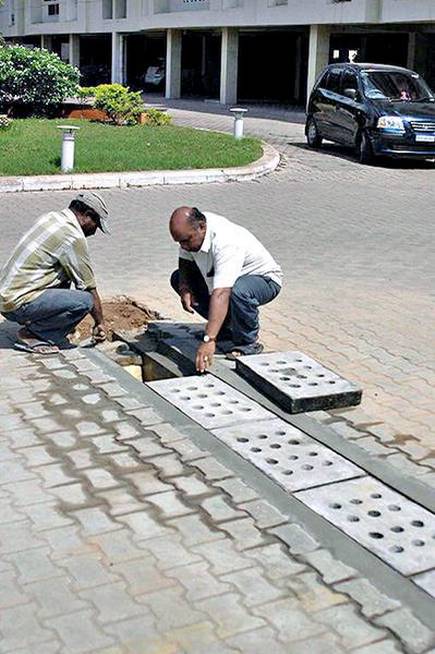If distributed well and linked to clean catchments such as rooftops, roads and stormwater drains without sewage flow, it will be possible to harvest a substantial volume of rainfall that occurs across the city.

The listing of the city of Bengaluru among the top 11 cities to run out of water following the Cape Town experience, has set alarm bells ringing among many worried citizenry. While the news may itself be exaggerated the fact is much needs to be done to improve the water infrastructure of the city.
The single source of water continues to be the Cauvery. About 2,175 million litres of water per day will be pumped into the city by 2023. The Bangalore Water Supply and Sewerage Board (BWSSB) hopes to reduce fiscal and physical leakages in the pipes as one measure to increase supply. A second measure is to recycle and reuse treated waste-water with dual pipelines for non-potable use.
The decentralised water infrastructure available in the city in the form of over 10,000 wells and about 400,000 borewells does not figure formally in the BWSSB scheme of things to build water resilience for the city. While rainwater harvesting is made mandatory and its implementation is being pushed it is not clear what will be a likely goal for augmentation of the water needs for the city.
The city should push for a million wells in its 1,250 sq.km. area. If distributed well and linked to clean catchments such as rooftops, roads and storm drains without sewage flow, it will be possible to harvest a substantial volume of rainfall that occurs across the city.
All the 400,000 borewells too should become recharge structures putting clean and filtered rainwater into the exploited aquifers.
Expert guidance
In this endeavour an army of traditional well diggers, called Mannu Vaddars, will be available to enable the city to make these million wells. Their livelihoods will be enhanced and in the construction and maintenance of the wells they will find steady employment.
Similarly plumbers skilled in building rainwater harvesting systems will find employment. Rainwater filter makes will find a business and this movement can become an urban employment guarantee scheme. A small amount of skill upgradation will make sure that pollution and contamination of groundwater is avoided and that safety measures are taken while designing and building these recharge structures.
In normal circumstances, the amount of water that reaches an aquifer is about 10% of the rainfall that occurs. Through a managed aquifer scheme this will need to be increased to 60% . Over the entire Bengaluru Urban District, if the programme reaches its goal, then 2400 million litres per day can come from annually replenished groundwater to supplement the city’s water requirement. A substantial figure and more than what will be pumped from the Cauvery.
The answer to the water requirements of our growing urban areas such Bengaluru, Hyderabad, Chennai, Thiruvananthapuram, Mysuru and many others may lie below our feet. In connecting the earth to the sky and the clouds, in providing employment to those who most need it, in tradition, culture, livelihoods, science and modernity may lie answers to the water security of our cities and a green infrastructure being created. This would be water wisdom in an era of climate change.
First published by The Hindu on 23 Mar. 2018
Also read Build and recharge open wells: Lessons from Bengaluru for India’s groundwater crisis